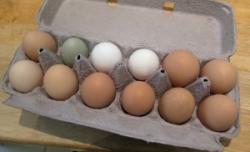

Naturally, many people who discover the cruel origins of their meals want to switch to a more ethical company. However, it is surprisingly difficult to buy eggs that come from truly humane farms. Many companies put misleading labels on their cartons to trick the consumer into thinking they practice ethical farming, when in fact they persist in cruelty for the sake of profit.
The most deceptive of these labels is all natural. The U.S. Food and Drug Administration (FDA) provides no official definition for this label, and there is little legislation on its proper use. The term is so vague that Cadbury Schweppes once tried to advertise the drink 7UP as “all natural” based on the fact that high fructose corn syrup comes from corn. Furthermore, the label does not say anything about how the animals are treated.

Even labels like cage-free, free-range and certified organic are ambiguous at best. Cage-free means exactly what it says: the chickens do not have cages and are thus able to nest, walk, etc. However, they generally don’t have access to the outdoors, and the sizes of their “cage-free” spaces are not regulated. Also, the farmers are still allowed to trim the chickens’ beaks, a practice that prevents cramped and agitated birds from mutilating themselves or each other.

Of course, there are many organic and free-range farms that treat their animals well. However, the current labeling system makes it difficult for consumers to differentiate between farmers who act ethically and those who barely meet the lax regulations. The American public needs a more honest poultry industry, one without misleading labels and hidden loopholes. If these “green” companies truly wish to earn a reputation as ethical food providers, then they need to stop mimicking the multi-million-dollar agribusinesses and start making their farms look more like the picture on the carton.
Photos courtesy of fishermansdaughter, Flickr Creative Commons, Robert Couse-Baker, Flickr Creative Commons, and Wikimedia Commons